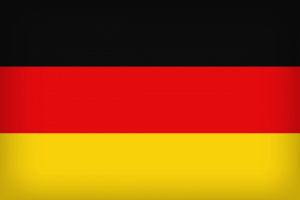Difference between revisions of "Language/German/Grammar/Plurals"
m (Quick edit) |
m (Quick edit) |
||
| Line 45: | Line 45: | ||
<br><hr>If you have any questions, please ask them in the comments section below.<br>Feel free to edit this wiki page if you think it can be improved. 😎 | <br><hr>If you have any questions, please ask them in the comments section below.<br>Feel free to edit this wiki page if you think it can be improved. 😎 | ||
==Videos== | |||
===THE 5 RULES of The German PLURAL - YouTube=== | |||
<youtube>https://www.youtube.com/watch?v=BgZ--QmPAIw</youtube> | |||
===Predict German Plurals | German with Laura - YouTube=== | |||
<youtube>https://www.youtube.com/watch?v=Jh9XZzrERTQ</youtube> | |||
{{German-Page-Bottom}} | {{German-Page-Bottom}} | ||
Revision as of 16:06, 22 February 2023
Learning German grammar can be a daunting task, but understanding the basics of plurals is an essential part of mastering the language. Plurals are used to indicate more than one of something, and they are formed differently depending on the gender of the noun. In this lesson, we will explore the rules for forming plurals in German.
Masculine Nouns
Masculine nouns are the easiest to form plurals for, as they only require the addition of an -e at the end of the word. For example, der Mann (man) becomes die Männer (men).
Exceptions
There are some exceptions to this rule, however. Nouns that end in -er, -el, or -en do not take an -e in the plural form. For example, der Lehrer (teacher) becomes die Lehrer (teachers).
Feminine Nouns
Feminine nouns are slightly more complicated, as they require the addition of an -n or -en at the end of the word. For example, die Frau (woman) becomes die Frauen (women).
Exceptions
As with masculine nouns, there are some exceptions to this rule. Nouns that end in -in, -heit, -keit, -schaft, and -ung do not take an -n or -en in the plural form. For example, die Freiheit (freedom) becomes die Freiheiten (freedoms).
Neuter Nouns
Neuter nouns are the most complicated to form plurals for, as they require the addition of an -er at the end of the word. For example, das Kind (child) becomes die Kinder (children).
Exceptions
As with the other genders, there are some exceptions to this rule. Nouns that end in -chen, -lein, -ma, -ment, and -um do not take an -er in the plural form. For example, das Zimmer (room) becomes die Zimmer (rooms).
Plural Agreement
It is important to note that adjectives and verbs must agree with the nouns they modify or refer to in terms of gender and number. For example, if you are referring to a group of men, you would use the masculine plural form of the adjective or verb.
For example:
Die Männer sind groß. (The men are tall.)
Die Frauen sind schön. (The women are beautiful.)
Die Kinder sind nett. (The children are nice.)
By understanding the rules for forming plurals in German, you can become a more confident speaker of the language. If you want to practice your German skills, why not join the Polyglot Club community? Polyglot Club is a great place to meet other language learners and practice your skills.
If you have any questions, please ask them in the comments section below.
Feel free to edit this wiki page if you think it can be improved. 😎
Videos
THE 5 RULES of The German PLURAL - YouTube
Predict German Plurals | German with Laura - YouTube
